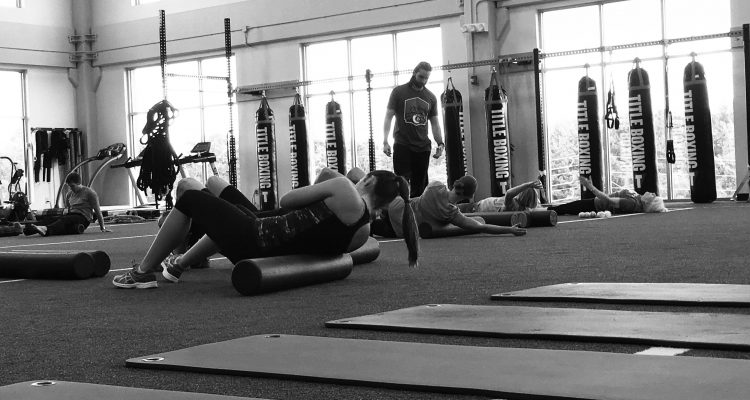In this article, you will learn how to organize your warm up period into 3 categories:
- Energize - Engage in a full body, low intensity cardiovascular exercise to increase heat and blood flow to the muscles.
- Mobilize - Prepare the joints that will be involved in the day’s exercises through dynamic stretching or self-myofascial release.
- Activate - Sharpen your day’s movement patterns with low-resistance, technique-based drills.
A warm up should be as targeted, efficient, and productive as any other part of your training session. Most traditional forms of warming up, like static stretching, are ineffective and unstructured. A proper warm up can effectively prepare you for the upcoming training session and prevent injuries.
Energize
Spend the first 5-10 minutes of your warm up engaging in full-body, low to medium intensity exercise. Repetitive movement can increase blood flow to your active muscles, lubricate your joints, and stimulate the cardiovascular system for the upcoming session. This portion of your warm up will literally heat up your active muscles, which can improve muscle contraction speed, oxygen delivery, nerve transmission, and movement economy. Since this portion of the warm up is general, you can vary it to keep things interesting. Try these full-body exercises to energize the system:
- Jump Rope
- Jumping Jacks
- Rowing Machine
- Airdyne
- Stick-Drop Game
- Knee-Slap Game
Mobilize
The next 5 minutes should be spent mobilizing the joints or movements associated with the upcoming training session. This portion of your warm up should be specific: work only on the problem areas. If you don’t have tight or tender hamstrings, you don’t need to roll them out. If you have poor ankle mobility, and you are squatting in the workout, take the time to roll out your ankles, and do the kneeling soleus stretch. This part of the warm up should be dynamic. Instead of statically stretching your muscle, take it through a full range of motion, pausing only for 2-5 seconds in the stretch before repeating the movement. Use this equipment:
- Bands
- Foam Roller
- Tennis, Golf, or Lacrosse Balls
Activate
By now, your muscles will be warm and your joints prepped for the training session. The last 5 minutes should be spent sharpening your day’s movement patterns with low-resistance, technique-based drills. The purpose of this is to switch on your nervous system and activate the specific muscles for the lift. Identify the main movements you will be completing during the workout and activate those specific muscles. For example, activate the shoulders (rotator cuff) for Pushes, or the scapula and lats for Pulls. Abdominal bracing and core activation are also recommended. Here are some examples of activation exercises:
- KB Prying Goblet Squat
- Band or Stick Overhead Squat
- Prisoner Squat
- KB Halo
- Dumbell Hang Cleans
- Box Jumps to Stabilization
- Low or Medium Resistance Overhead Carry
- Scapula Pulls
- Isometric Glute Bridge for 2 minutes
Remember to use the warm up as your time to specifically prepare for the lift ahead. If you can’t identify how that specific warm up exercise is helping you, it’s probably worth dropping for something more effective.

